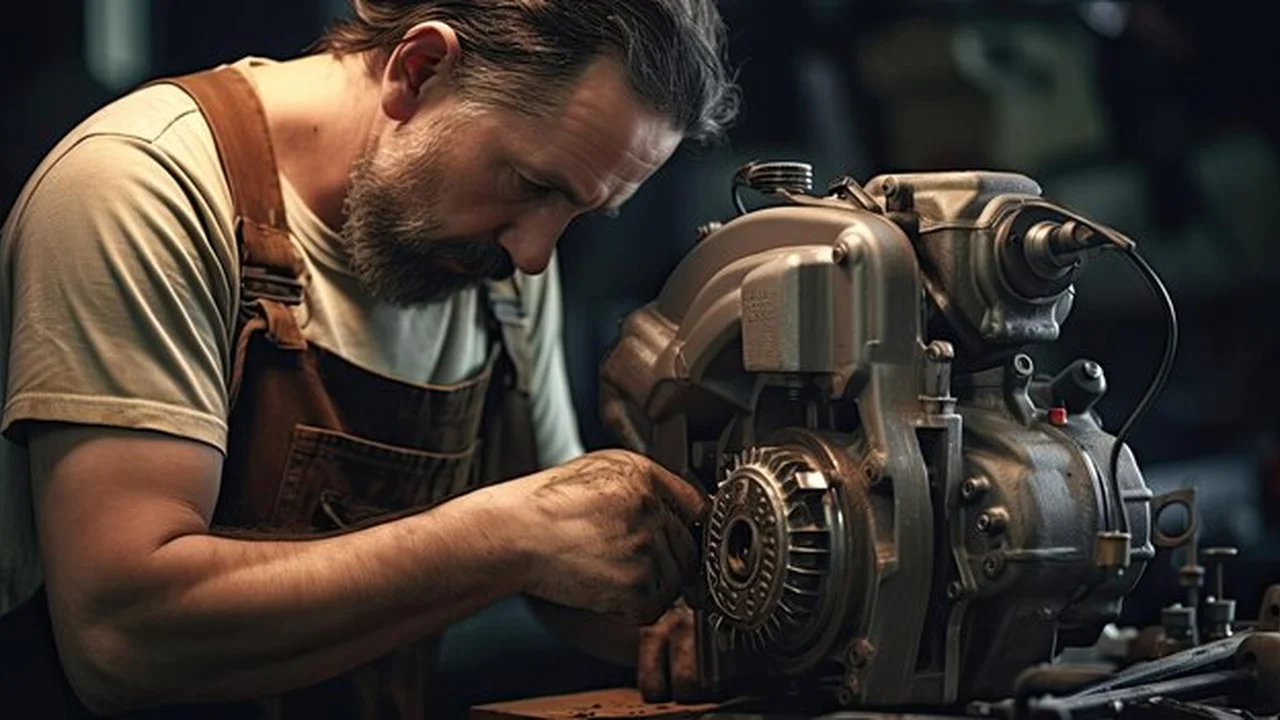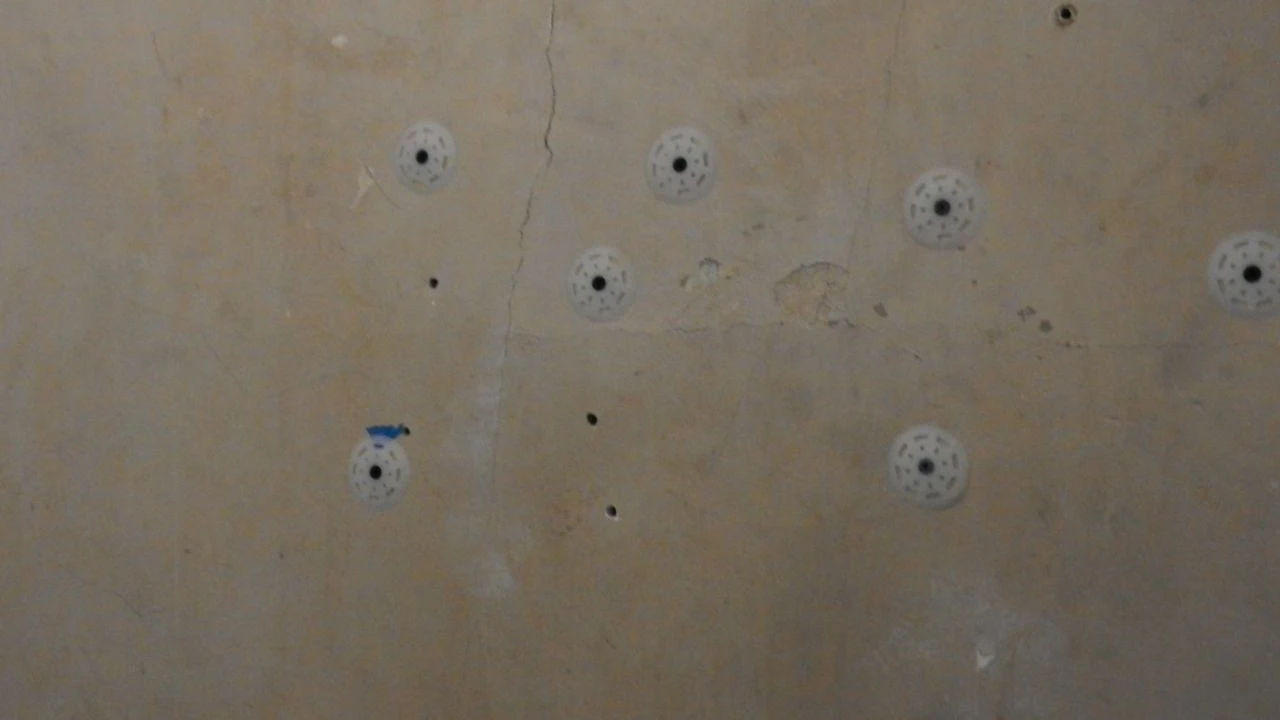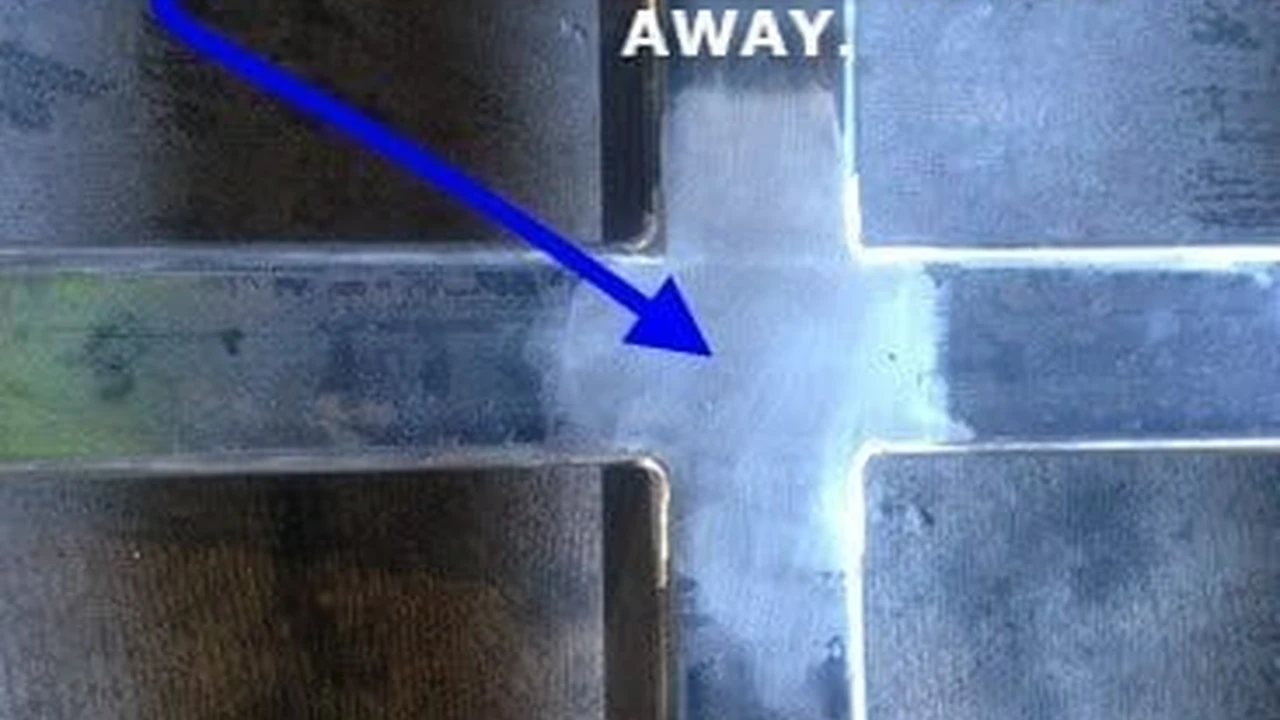Ignition System Restoration: Ensuring Reliable Starts
Ensure reliable starts for your classic car by restoring its ignition system. Learn about points, condensers, and distributors. Improve engine performance and reliability.

Classic Car Ignition System Basics Points Condensers and Distributors
Alright, let's dive into the heart of your classic car's ignition system. We're talking about the components that make that engine roar to life – or, more accurately, *should* make it roar to life. A well-maintained ignition system is crucial for reliable starting, smooth running, and optimal fuel efficiency. Neglecting this area can lead to frustrating no-start situations, poor performance, and even engine damage. So, grab your wrenches, and let's get started!
The three main players in a traditional ignition system are the points, the condenser, and the distributor. Let's break down each one:
Ignition Points Function and Maintenance
The ignition points, also known as contact points, are essentially a mechanical switch that opens and closes the primary circuit in the ignition coil. This opening and closing action creates the high-voltage spark needed to ignite the air-fuel mixture in the cylinders. Think of it like a tiny, precisely timed gatekeeper for the electrical current.
Function: The points are mounted inside the distributor and are operated by a cam on the distributor shaft. As the cam rotates, it pushes the points open and closed. The dwell angle, which is the number of degrees the distributor cam rotates while the points are closed, is a critical setting. Incorrect dwell angle can lead to weak spark, misfires, and burned points.
Maintenance: Points are a wear item and require regular inspection and maintenance. Over time, the contact surfaces can become pitted and burned, affecting their ability to conduct electricity efficiently. Here's what you need to do:
- Inspection: Check the points regularly for pitting, burning, and proper alignment. Use a points file to lightly clean the contact surfaces. If the pitting is severe, the points need to be replaced.
- Adjustment: Adjust the point gap according to the manufacturer's specifications. Use a feeler gauge to ensure the correct gap. Incorrect gap can affect the dwell angle and engine performance.
- Lubrication: Apply a small amount of high-temperature grease to the distributor cam to lubricate the rubbing block on the points. This will prevent premature wear.
Condenser Role in Ignition Spark and Protecting Points
The condenser, also known as a capacitor, is a small electrical component that plays a crucial role in protecting the ignition points and improving spark quality. It's often overlooked but essential for a properly functioning ignition system.
Function: When the points open, the condenser absorbs the voltage spike that would otherwise arc across the points. This prevents the points from burning and pitting prematurely. It also helps to create a hotter, more consistent spark at the spark plugs.
Signs of a Bad Condenser: A faulty condenser can cause a variety of problems, including:
- Burned Points: If the points are burning or pitting excessively, it could be a sign of a bad condenser.
- Weak Spark: A weak or intermittent spark can also be caused by a faulty condenser.
- Engine Misfires: Misfires, especially at higher RPMs, can be a symptom of a bad condenser.
Replacement: Replacing the condenser is a relatively simple and inexpensive task. Make sure to use a condenser that is specifically designed for your classic car's ignition system.
Distributor Function Timing and Restoration Techniques
The distributor is the central hub of the ignition system. It's responsible for distributing the high-voltage spark from the ignition coil to the correct spark plug at the correct time. It also houses the points, condenser, and centrifugal advance mechanism.
Function: The distributor is driven by the engine's camshaft. As the distributor shaft rotates, it opens and closes the points, triggering the ignition coil to produce a spark. The distributor cap and rotor then direct the spark to the appropriate spark plug.
Timing: Proper ignition timing is crucial for optimal engine performance and fuel efficiency. The timing should be set according to the manufacturer's specifications. Incorrect timing can lead to pinging, knocking, and reduced power.
Restoration: Restoring a distributor involves cleaning, inspecting, and replacing worn components. Here's a basic overview:
- Disassembly: Carefully disassemble the distributor, noting the location of all components.
- Cleaning: Clean all parts thoroughly with a solvent.
- Inspection: Inspect the distributor shaft for wear and play. Check the distributor cap and rotor for cracks and damage. Replace any worn or damaged parts.
- Lubrication: Lubricate the distributor shaft and centrifugal advance mechanism with high-temperature grease.
- Reassembly: Reassemble the distributor, ensuring that all components are properly installed.
- Testing: Test the distributor on a distributor machine to ensure that it is functioning properly.
Product Recommendations for Classic Car Ignition Restoration
Now that we've covered the basics, let's talk about some specific products that can help you restore your classic car's ignition system to its former glory. Remember to always consult your car's service manual for specific recommendations.
Recommended Ignition Points Sets for Vintage Vehicles
Choosing the right ignition points is crucial for reliable performance. Here are a few top contenders:
- Standard Motor Products LX40 Ignition Points: These points are a popular choice for many classic cars. They are known for their durability and reliability. They typically cost around $20-$30 per set.
- Bosch 0201115007 Ignition Points: Bosch is a trusted name in automotive parts, and their ignition points are no exception. These points are known for their precise construction and consistent performance. Expect to pay around $25-$35 per set.
- Echlin Ignition Points: Available at NAPA Auto Parts, Echlin points offer a good balance of quality and affordability. Prices usually range from $15-$25 per set.
Top Condensers for Classic Car Ignition Systems
Don't skimp on the condenser! A good condenser will protect your points and improve spark quality.
- Standard Motor Products AL45 Condenser: This condenser is a reliable and affordable option for many classic cars. It's designed to withstand high temperatures and provide consistent performance. Prices are typically around $10-$15.
- Bosch 0227503001 Condenser: Another excellent choice from Bosch, this condenser is known for its quality and durability. Expect to pay around $12-$18.
- ACDelco D130 Condenser: ACDelco is a trusted brand for GM vehicles, and their condensers are a solid choice for classic GM cars. Prices are usually between $8 and $15.
Best Distributors for Classic Car Upgrades and Restoration
If your distributor is beyond repair, or if you're looking for an upgrade, here are a few options to consider:
- Pertronix Ignitor Electronic Ignition Conversion Kit: This kit replaces the points and condenser with a solid-state electronic ignition system. It eliminates the need for regular points adjustments and provides a hotter, more consistent spark. Prices range from $100-$200 depending on the application. Use Case: This is an excellent upgrade for improving reliability and performance. Comparison: Compared to traditional points, the Pertronix system requires no maintenance and provides a stronger spark.
- MSD StreetFire Distributor: MSD offers a range of distributors for classic cars, from stock replacements to high-performance models. The StreetFire distributor is a good option for street-driven classics. Prices vary depending on the specific model, but typically range from $200-$400.
- Original Equipment Replacement Distributor: If you want to maintain the original appearance and function of your ignition system, a rebuilt or new original equipment replacement distributor is the way to go. Prices vary depending on the rarity and condition of the distributor.
Comparing Electronic Ignition Conversion Kits vs Traditional Points Systems
One of the biggest decisions you'll face when restoring your ignition system is whether to stick with the traditional points system or upgrade to an electronic ignition conversion kit. Let's weigh the pros and cons of each:
Electronic Ignition Conversion Kits Advantages and Disadvantages
Advantages:
- Improved Reliability: Electronic ignition systems are much more reliable than points systems. They eliminate the need for regular points adjustments and are less susceptible to wear and tear.
- Hotter Spark: Electronic ignition systems typically produce a hotter, more consistent spark, which can improve engine performance and fuel efficiency.
- Easier Starting: Electronic ignition systems often provide easier starting, especially in cold weather.
- Lower Maintenance: Once installed, electronic ignition systems require very little maintenance.
Disadvantages:
- Cost: Electronic ignition conversion kits can be more expensive than replacing the points and condenser.
- Installation: Installation can be more complex than replacing the points and condenser, although many kits are designed for easy installation.
- Originality: Some purists prefer to stick with the original points system to maintain the authenticity of their classic car.
Traditional Points Systems Advantages and Disadvantages
Advantages:
- Originality: Maintaining the original points system preserves the authenticity of your classic car.
- Cost: Replacing the points and condenser is typically less expensive than installing an electronic ignition conversion kit.
- Simplicity: Points systems are relatively simple to understand and work on.
Disadvantages:
- Lower Reliability: Points systems are less reliable than electronic ignition systems. They require regular adjustments and are susceptible to wear and tear.
- Weaker Spark: Points systems typically produce a weaker spark than electronic ignition systems.
- Higher Maintenance: Points systems require regular maintenance, including adjusting the point gap and replacing the points and condenser.
Step by Step Ignition System Restoration Guide for Classic Cars
Ready to get your hands dirty? Here's a step-by-step guide to restoring your classic car's ignition system:
Tools and Materials Needed for Ignition Restoration
Before you begin, gather the following tools and materials:
- New Ignition Points
- New Condenser
- New Distributor Cap and Rotor
- Feeler Gauge
- Points File
- Distributor Wrench
- Timing Light
- Multimeter
- Solvent
- High-Temperature Grease
- Shop Rags
- Service Manual for Your Car
Step 1 Disconnecting the Battery and Preparing the Work Area
Safety first! Disconnect the negative battery cable before you begin working on the ignition system. This will prevent accidental shorts and electrical shocks. Also, make sure you have a well-lit and clean work area.
Step 2 Removing the Old Distributor Cap and Rotor
Remove the distributor cap by releasing the retaining clips or screws. Inspect the cap for cracks, carbon tracking, and worn terminals. Remove the rotor and inspect it for cracks and damage. Replace the cap and rotor if necessary.
Step 3 Inspecting and Replacing the Ignition Points
Inspect the ignition points for pitting, burning, and proper alignment. If the points are worn or damaged, replace them. To replace the points, loosen the retaining screw and remove the old points. Install the new points and tighten the retaining screw. Apply a small amount of high-temperature grease to the distributor cam.
Step 4 Installing the New Condenser
Remove the old condenser by disconnecting the wire from the distributor and removing the mounting screw. Install the new condenser and tighten the mounting screw. Connect the wire to the distributor.
Step 5 Setting the Point Gap and Dwell Angle
Use a feeler gauge to set the point gap according to the manufacturer's specifications. Rotate the engine until the rubbing block on the points is on the high point of the distributor cam. Insert the feeler gauge between the points and adjust the gap until it is correct. Tighten the retaining screw.
The dwell angle can be checked with a dwell meter. Connect the dwell meter to the distributor and start the engine. Adjust the point gap until the dwell angle is correct.
Step 6 Reinstalling the Distributor Cap and Rotor
Reinstall the rotor and distributor cap. Make sure the rotor is pointing to the correct terminal in the distributor cap.
Step 7 Setting the Ignition Timing
Use a timing light to set the ignition timing according to the manufacturer's specifications. Connect the timing light to the spark plug wire for the number one cylinder. Start the engine and point the timing light at the timing marks on the crankshaft pulley. Adjust the distributor until the timing marks align correctly.
Step 8 Testing the Ignition System
After restoring the ignition system, test it to make sure it is functioning properly. Start the engine and listen for any misfires or unusual noises. Check the spark plugs to make sure they are firing properly. Use a multimeter to check the voltage at the spark plugs.
Troubleshooting Common Ignition System Problems
Even with careful restoration, ignition systems can still experience problems. Here are a few common issues and how to troubleshoot them:
Engine Won't Start Diagnosing Ignition Issues
If your engine won't start, the first thing to check is the ignition system. Make sure the spark plugs are firing properly. If the spark plugs are not firing, check the ignition coil, points, condenser, and distributor.
Engine Misfires Identifying and Resolving Spark Problems
Engine misfires can be caused by a variety of ignition problems, including worn spark plugs, a faulty ignition coil, or a bad condenser. Check the spark plugs for wear and damage. Replace any worn or damaged spark plugs. Test the ignition coil and condenser to make sure they are functioning properly.
Weak Spark Causes and Solutions
A weak spark can be caused by a variety of ignition problems, including a faulty ignition coil, worn points, or a bad condenser. Test the ignition coil and condenser to make sure they are functioning properly. Adjust the point gap to make sure it is correct.
Pinging and Knocking Adjusting Timing for Optimal Performance
Pinging and knocking can be caused by incorrect ignition timing. Use a timing light to set the ignition timing according to the manufacturer's specifications.
Restoring your classic car's ignition system is a rewarding experience. By following these steps, you can ensure reliable starts, smooth running, and optimal performance for years to come. Happy wrenching!
:max_bytes(150000):strip_icc()/277019-baked-pork-chops-with-cream-of-mushroom-soup-DDMFS-beauty-4x3-BG-7505-5762b731cf30447d9cbbbbbf387beafa.jpg)






